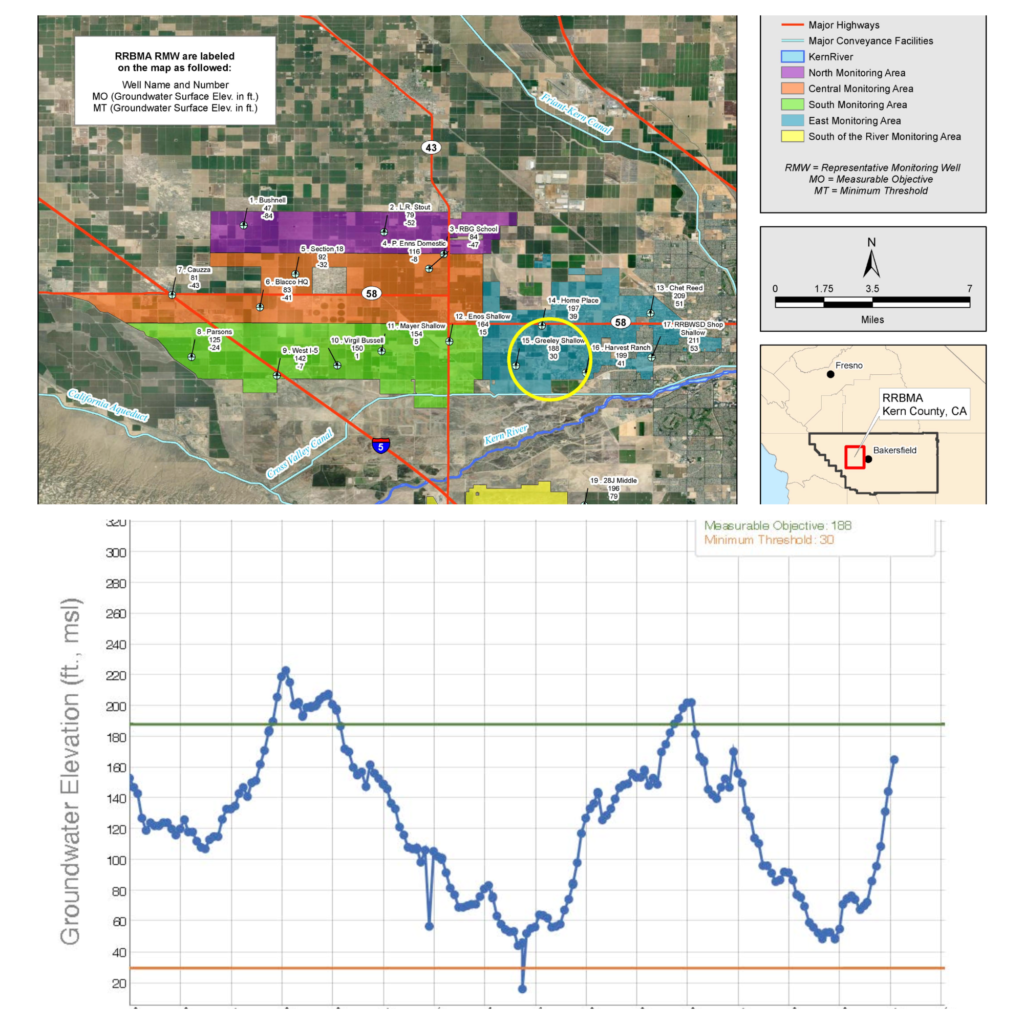Over the past three years, California has been put through a water whiplash, going from multiple years of crippling drought directly into one of the wettest years on record. The data shows how stark the experience was while state officials point to both successes and areas needing improvement that arose during the turbulent last few years.
2022: The third year of drought
In 2022, California was in its third year of a historic drought. Farmers relied heavily on pumping groundwater. Water tables dropped precipitously, which dried up hundreds of domestic wells across the valley.
In February of 2022, every reservoir in the valley was below the historical average level for the time.
- San Luis Reservoir was at 58% of average.
- New Melones Reservoir was at 69% of average.
- Millerton Reservoir was at 83% of average.
- Pine Flat Reservoir was at 70% of average.
Snowpack was also lacking with the southern Sierra Nevadas at 73% of normal for this time of year in 2022.
But groundwater levels are where the numbers stand out most profoundly. The drought drove already declining groundwater levels down even further. Monitoring wells saw declines of five feet or more in 30% to 50% of readings in 2022.
By late fall of 2022, the San Joaquin Valley saw more than 1,000 wells go dry.
Between spring of 2021 and spring of 2022, the San Joaquin Valley saw some of the largest drops in groundwater levels in the state, according to the California Natural Resources Agency.
- In the San Joaquin River region, which covers the northern half of the San Joaquin Valley, about 40% of wells saw a drop between 5-25 feet. Less than 10% of those wells saw drops of more than 25 feet. About 50% of wells saw no changes. About 10% of wells saw increases of 5-25 feet or more.
- In the Tulare Lake region, which covers the southern half of the San Joaquin Valley, about 20% of wells saw a drop of more than 25 feet and 50% saw a drop of between 5-25 feet. About 20% of wells saw no changes. And about 10% of wells saw increases of 5-25 feet or more.
The Tulare Lake region saw the greatest decline in groundwater levels out of the entire state.
2023: Here comes the rain, snow and floods
Things changed quickly and drastically in 2023 when the west was hit with a string of storms that drenched the state and built up a record snowpack. The historic winter caused extraordinary runoff and devastating floods throughout the valley.
Storms hit in January and continued through March of 2023.
By March 31, 2023, reservoirs were filled to capacity, with many forced to “spill” and flush water downstream.
- San Luis Reservoir was at 113% of average.
- New Melones was at 93% of average.
- Millerton Reservoir was at 91% of average.
- Pine Flat Reservoir was at 137% of average.
The snowpack was at a whopping 270% of average in the southern Sierra.
Groundwater levels responded more slowly. And experts say it will take multiple wet years and recharge management to fully recover groundwater levels from the last drought.
Between spring of 2022 and spring of 2023, groundwater levels declined more slowly than during the drought years and there was some rebounding.
- In the San Joaquin River region, about 10% of wells saw a drop between 5-25 feet. A small percentage of those wells saw drops of more than 25 feet. About 60% of wells saw no change in groundwater levels. About 30% of wells saw an increase in groundwater levels between 5-25 feet. A small percentage of those wells saw increases over 25 feet.
- In the Tulare Lake region, about 25% of wells still saw drops of 5-25 feet. About 5% of wells saw drops greater than 25 feet. About 40% of wells saw no change in groundwater levels. About 20% of wells saw an increase in groundwater levels between 5-25 feet. And about 10% of wells saw an increase of more than 25 feet.
The previous drought from 2012-2016 ended similarly with a historic wet year in 2017. But 2017’s extraordinary water dump was not enough to improve the long-term, downward trajectory of groundwater levels.
2024: Where are we now?
While this year hasn’t been as historic of a wet year as 2023, there has still been significant rain.
As of February 15, 2024, reservoir levels are relatively high for this time of year.
- San Luis Reservoir was at 83% of average.
- New Melones was at 139% of average.
- Millerton Reservoir was at 98% of average.
- Pine Flat Reservoir was at 155% of average.
Snowpack has been fairly meager this year, with warm storms delivering more rain than snow. As of Feb. 16, the southern Sierra snowpack was at 70% of average.
Groundwater levels are coming up but as one Kern County water manager told SJV Water, we won’t know the full impact of the 2023 season on water tables until later in spring of 2024. Those numbers won’t be reported to the state for several months.
Monthly hydrographs from the Rosedale-Rio Bravo Water Storage District, north of Bakersfield, show a promising bump.
Shallow wells have seen bigger boosts with one Rosedale-Rio Bravo well coming up more than 115 feet, according to hydrographs presented at the district’s Feb. 13 meeting.
However, even for those rebounding wells, the longer term shows a continuing downward pattern.
“As we face a hotter, drier future brought on by climate change, we are going to continue to see less snowpack,” wrote Karla Nemeth, director of California’s Department of Water Resources, in a statement. “We can’t rely on that snowpack for future water supply as we have in the past.”
Investments in better water capture, recharge and recycling are critical for the state’s future, wrote Nemeth.
“After a historic drought, followed by historic snowpack last year, we’re now getting very intense, warm, wet storms,” wrote Nemeth. “When we get these storm events, they’re going to be bigger and flashier, and we need to be better prepared to capture that water when it falls more as rain than snow.”
The unpredictability was an issue echoed by other officials.
Californians can no longer only plan for drought during drought times and floods during flood times, said Joaquin Esquivel, chair of the state Water Resources Control Board.
Some successes stood out during these recent extreme weather years, said Esquivel.
The ability for state agencies to work with partners on the ground, such as nonprofit Self-Help Enterprises, in response to dry wells, was a significant improvement from the previous drought, said Esquivel.
“To see everyone just move and to be able to respond in a way that just a few years prior we hadn’t is a testament to Self-Help and their ability to work with the state, and importantly, locals as well,” said Esquivel.
Of course there are also areas that need more work. One of those is affordability issues for water systems, said Esquivel. Even with investments by the state, many water systems are still struggling financially and are coming back for more funding, he said. That is making it difficult for these systems to implement the necessary sustainability projects to be better prepared for extreme years, he added.
Share this:
- Click to share on Facebook (Opens in new window)
- Click to share on Twitter (Opens in new window)
- Click to share on LinkedIn (Opens in new window)
- Click to share on Reddit (Opens in new window)
- Click to share on Tumblr (Opens in new window)
- Click to share on Pinterest (Opens in new window)
- Click to share on Pocket (Opens in new window)
- Click to share on Telegram (Opens in new window)
- Click to share on WhatsApp (Opens in new window)
- Click to print (Opens in new window)








